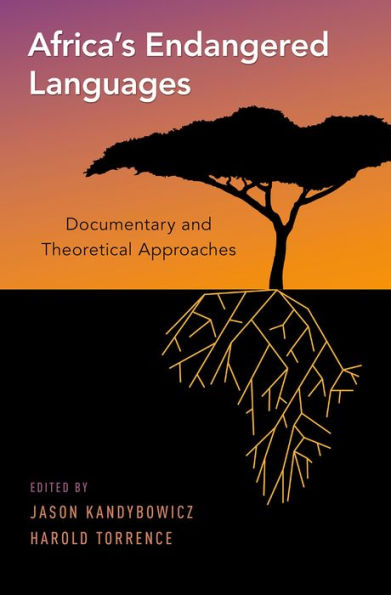Relatively little is known about Africa's endangered languages. Unlike indigenous languages in Australia, North Asia, and the Americas, which are predominantly threatened by colonizers, African languages are threatened most immediately by other local languages. As a result, the threat of language extinction is perceived as lower in Africa than in other parts of the globe, and a disproportionate amount of research is devoted to the study of endangered African languages when compared to any other linguistically threatened region in the world. There are approximately 308 highly endangered languages spoken in Africa (roughly 12% of all African languages) and at least 201 extinct African languages. This volume hopes to illuminate and challenge this trend. Chapters offer both documentary and theoretical perspectives, emphasizing the symbiotic relationship between the two approaches and its implications for the preservation of endangered languages, both in the African context and more broadly. Documentary-oriented chapters deal with key issues in African language documentation including language preservation and revitalization, community activism, and data collection and dissemination methodologies, among others. Theoretically-oriented chapters provide detailed descriptions and analyses of phonetic, phonological, morphological, syntactic, and semantic phenomena, and connect these to current theoretical issues and debates. Africa's Endangered Languages provides thorough coverage of a continent's neglected languages that will spur linguists and Africanists alike to work to protect them.
"1125580451"
Africa's Endangered Languages: Documentary and Theoretical Approaches
Relatively little is known about Africa's endangered languages. Unlike indigenous languages in Australia, North Asia, and the Americas, which are predominantly threatened by colonizers, African languages are threatened most immediately by other local languages. As a result, the threat of language extinction is perceived as lower in Africa than in other parts of the globe, and a disproportionate amount of research is devoted to the study of endangered African languages when compared to any other linguistically threatened region in the world. There are approximately 308 highly endangered languages spoken in Africa (roughly 12% of all African languages) and at least 201 extinct African languages. This volume hopes to illuminate and challenge this trend. Chapters offer both documentary and theoretical perspectives, emphasizing the symbiotic relationship between the two approaches and its implications for the preservation of endangered languages, both in the African context and more broadly. Documentary-oriented chapters deal with key issues in African language documentation including language preservation and revitalization, community activism, and data collection and dissemination methodologies, among others. Theoretically-oriented chapters provide detailed descriptions and analyses of phonetic, phonological, morphological, syntactic, and semantic phenomena, and connect these to current theoretical issues and debates. Africa's Endangered Languages provides thorough coverage of a continent's neglected languages that will spur linguists and Africanists alike to work to protect them.
95.49
In Stock
5
1

Africa's Endangered Languages: Documentary and Theoretical Approaches
400
Africa's Endangered Languages: Documentary and Theoretical Approaches
400eBook
$95.49
$126.99
Save 25%
Current price is $95.49, Original price is $126.99. You Save 25%.
Related collections and offers
95.49
In Stock

Product Details
| ISBN-13: | 9780190675288 |
|---|---|
| Publisher: | Oxford University Press |
| Publication date: | 07/10/2017 |
| Sold by: | Barnes & Noble |
| Format: | eBook |
| Pages: | 400 |
| File size: | 10 MB |
About the Author
From the B&N Reads Blog
